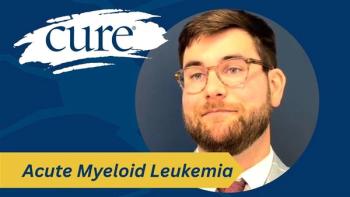
How COVID-19 Has Created a 'Shadow Curve' in the Treatment of Cancer and Other Diseases
The impact of the COVID-19 pandemic on the cancer landscape has lead to enormous challenges for patients and professionals alike, but the impact of the pandemic will be felt on cancer care for years to come.
By disrupting the screening and treatment schedules of millions of Americans, the COVID-19 pandemic has created what one expert refers to as a ‘shadow curve’ of medical conditions such as cancer that are on the rise in the background while the virus takes center stage.
CURE®’s sister publication, Cancer Network, recently spoke with Dr. Pat Basu, president and CEO of Cancer Treatment Centers of America, about what this phenomenon is and how it could impact patients in the coming months and years.
Cancer Network: First off, can you explain what you refer to in your op-ed as the ‘shadow curve’?
Basu: Sure. So, the shadow curve, for me, really is a phrase that captures the idea that, with COVID, we've been talking about flattening the COVID curve, which is perfectly appropriate, as COVID is obviously a very serious infectious disease. But in the background, a shadow curve has been rising. And to me, that is all the diseases that are being disrupted and not treated while we've disrupted the American health care system.
So, cancer is certainly at the top of the list, but (also) heart disease, neurologic issues (etc.). You can imagine that, with hundreds of thousands or millions of those types of cases, it's almost like a tidal wave that's kind of building in the background. And so that's what I refer to as the shadow curve, all of the other medical conditions outside of COVID that are deadly and that are rising in the background.
In speaking with some other doctors, we've been told that these rescheduled appointments have already become overwhelming to the system. What will happen if this continues for the long term?
In the long term, my personal goal is to prevent a study being written in the year 2023 where we look back and say, in 2020, we missed 500,000 cancers, and half a million other heart conditions and other things that have led to increased debt and increased worsening of quality of life and worse mortality and morbidity in the future. And to me, that could occur in a few ways:
Number one, the direct lack of screenings and diagnoses. It's been estimated already that potentially over 100,000 cancer cases have been missed, just from the direct aspect of missed screenings. But our American health care system, as you know, is so fragmented as it is. Think about the average patient who had a doctor's appointment scheduled in April or had a mammogram scheduled in May. In a perfect world, you would say, on June 1, or on July 1, come back and get that done. Unfortunately, we know that our American health care system is horrible at continuity of care. And so, what ends up happening is the doctor's office ends up looking at that patient's record and saying, “Oh, well, you know what, they missed their mammogram last year, they're 2021.” And so, these things are going to get pushed out further and further.
And then finally, of course, patients are disrupted with their lifestyle, or they don't want to go in. So, for direct screenings, for indirect diagnosis of disease, and just for general disruption due to patient preference or physician preference, we're sadly missing a lot of diagnoses and the resulting therapy will be unfortunately in a worse position.





